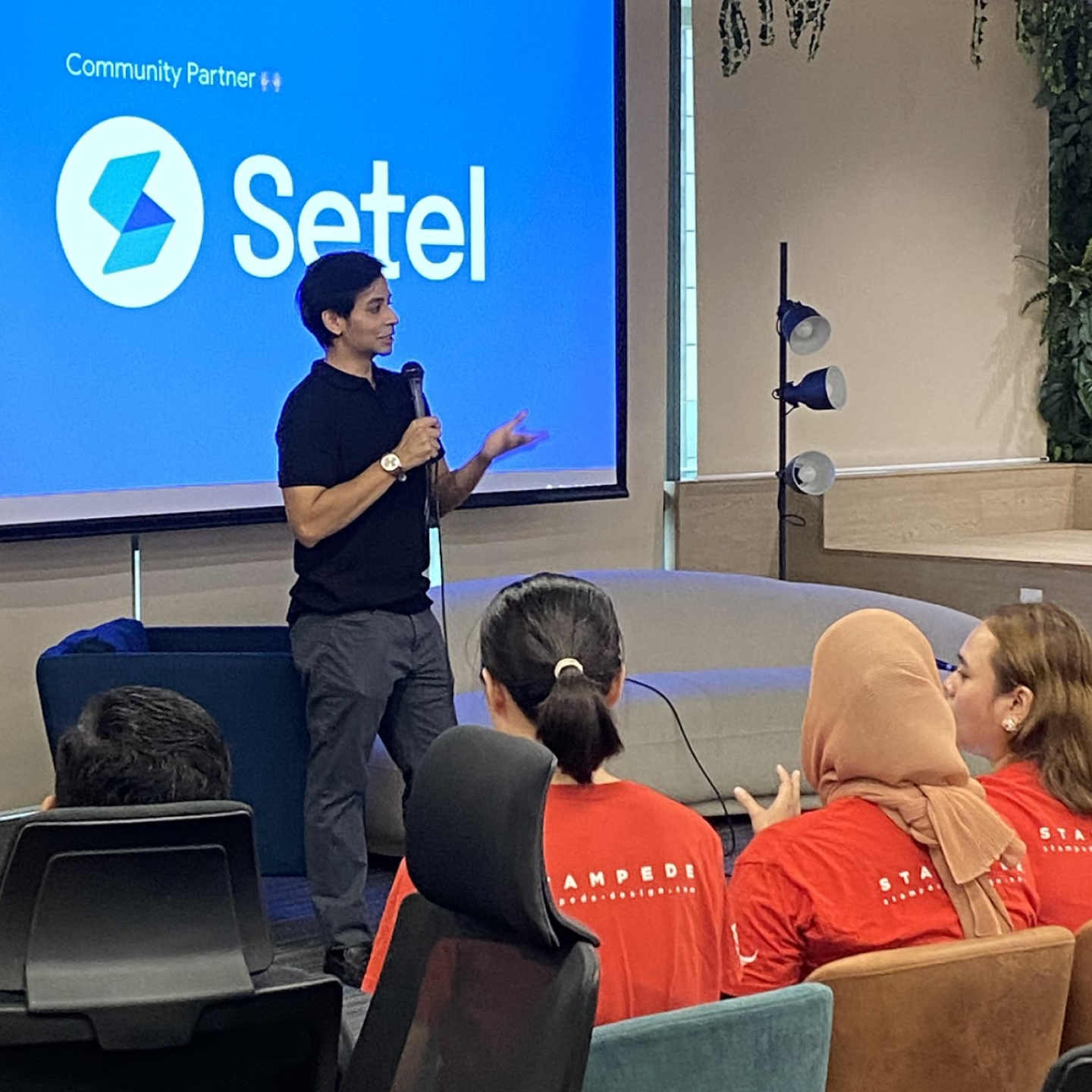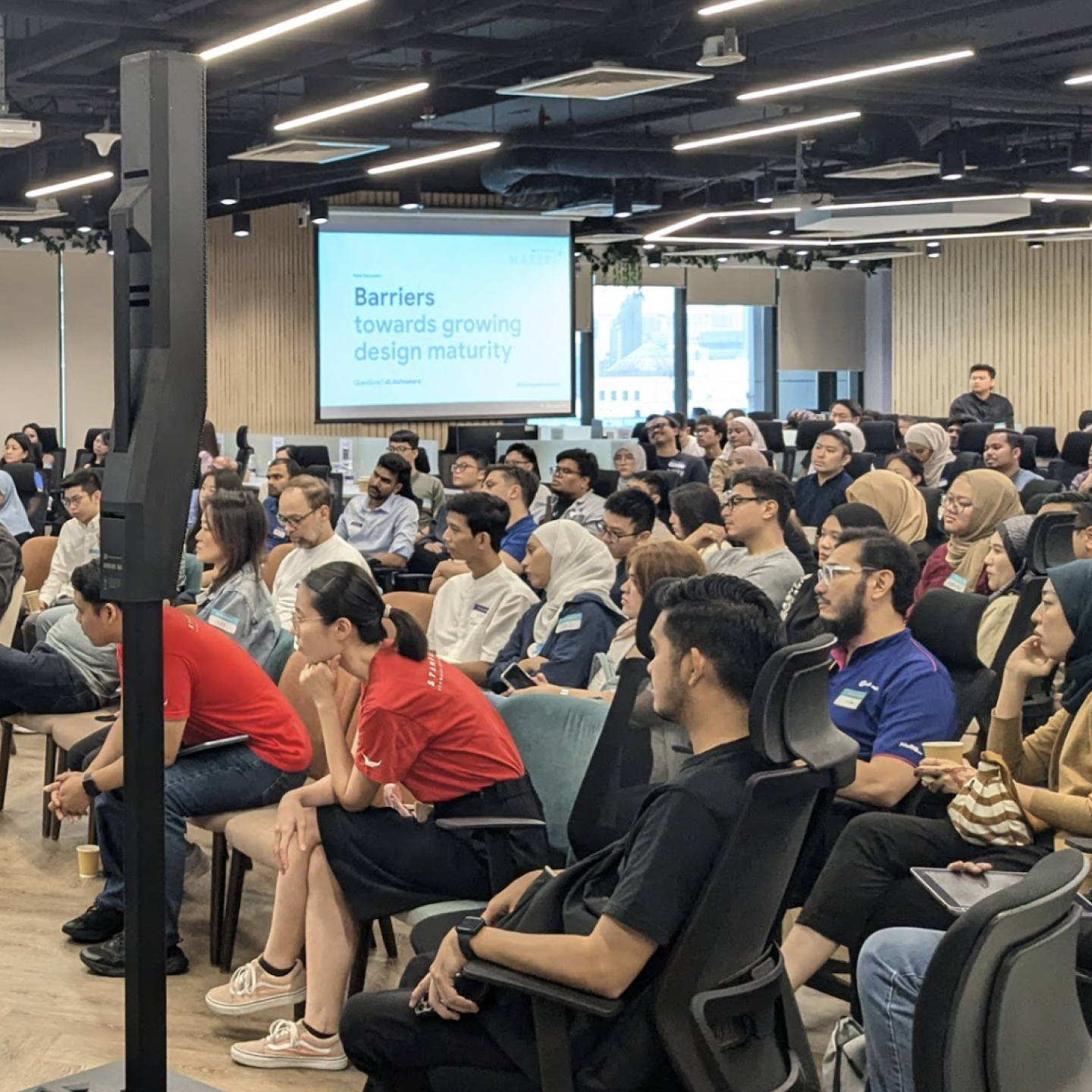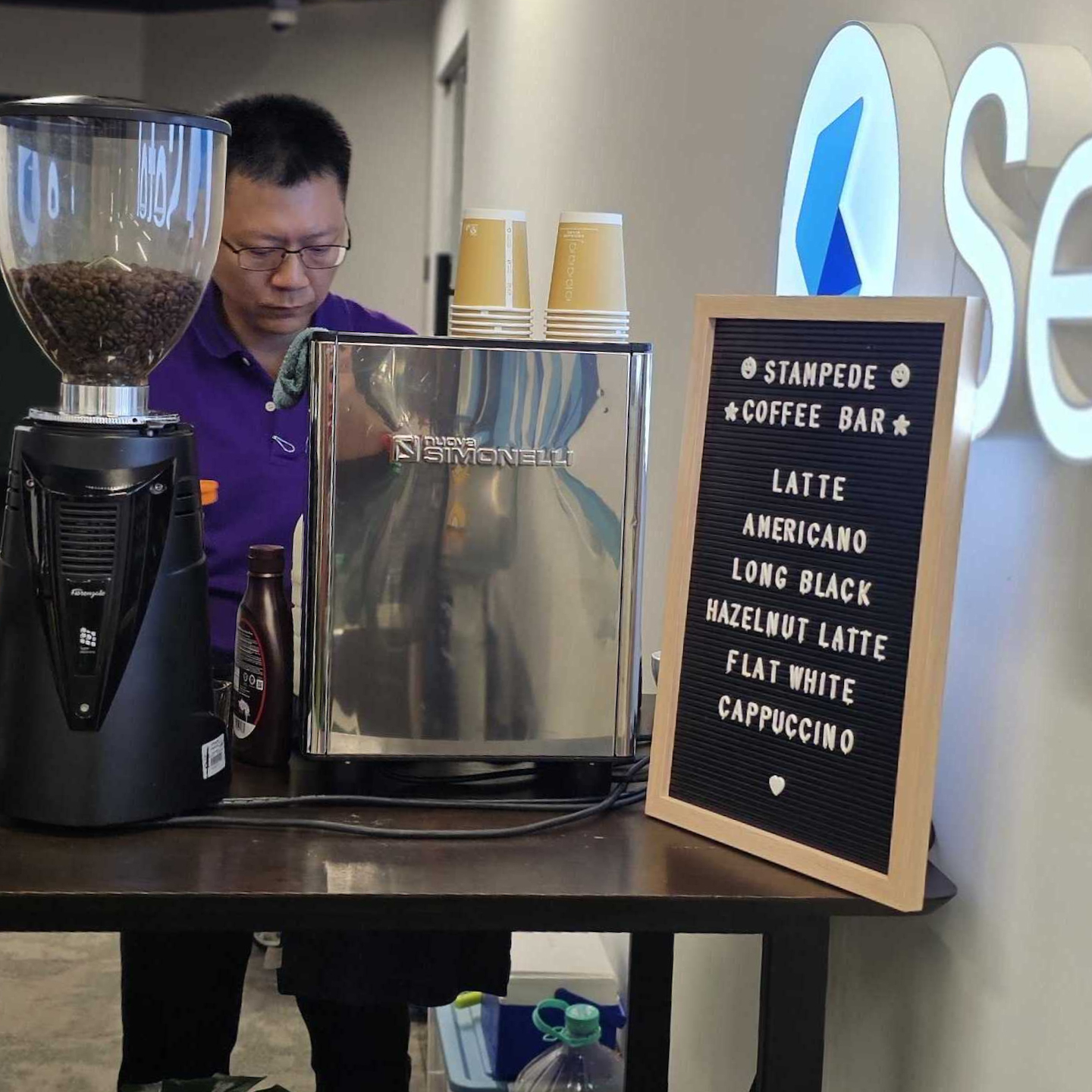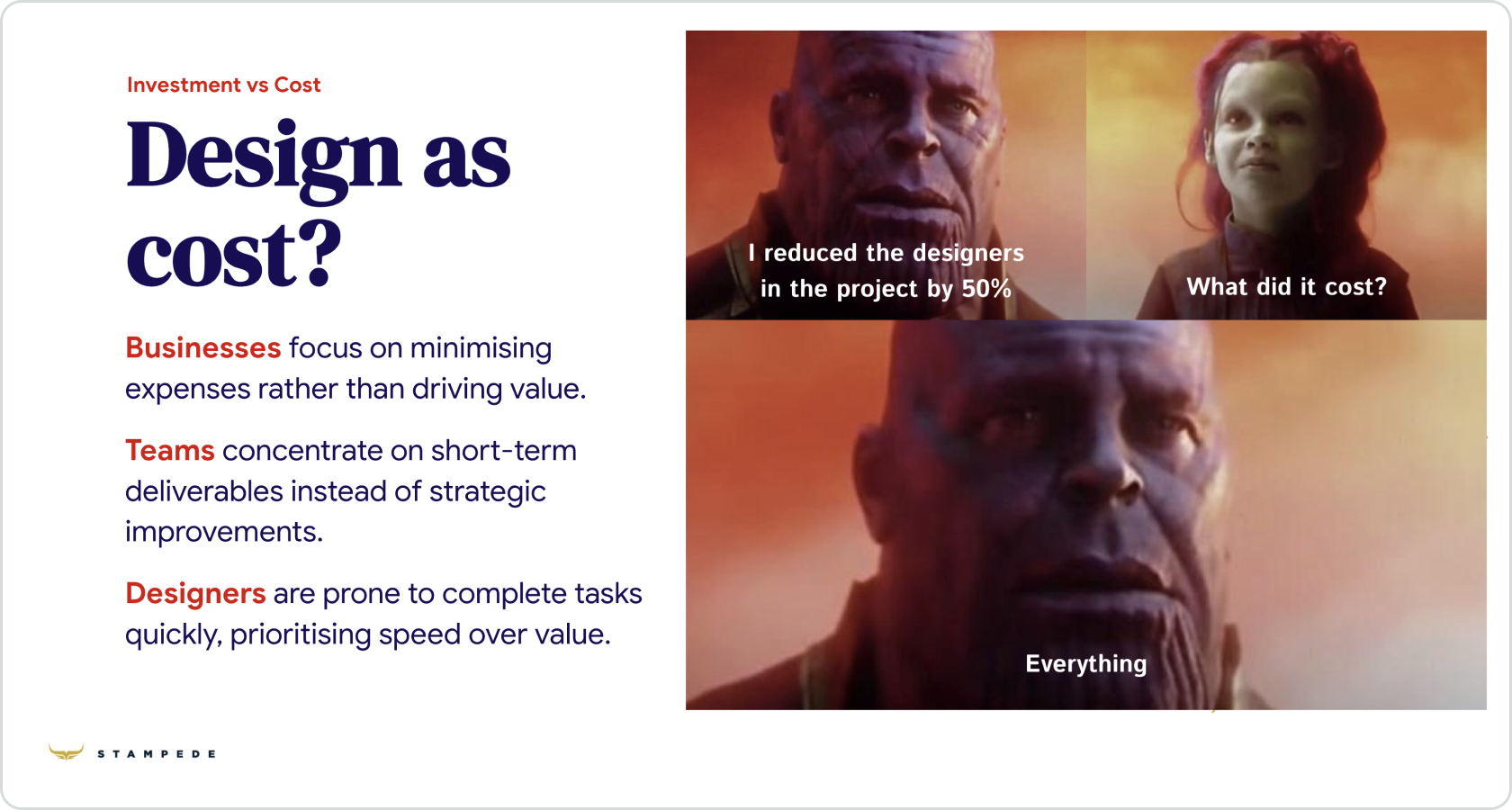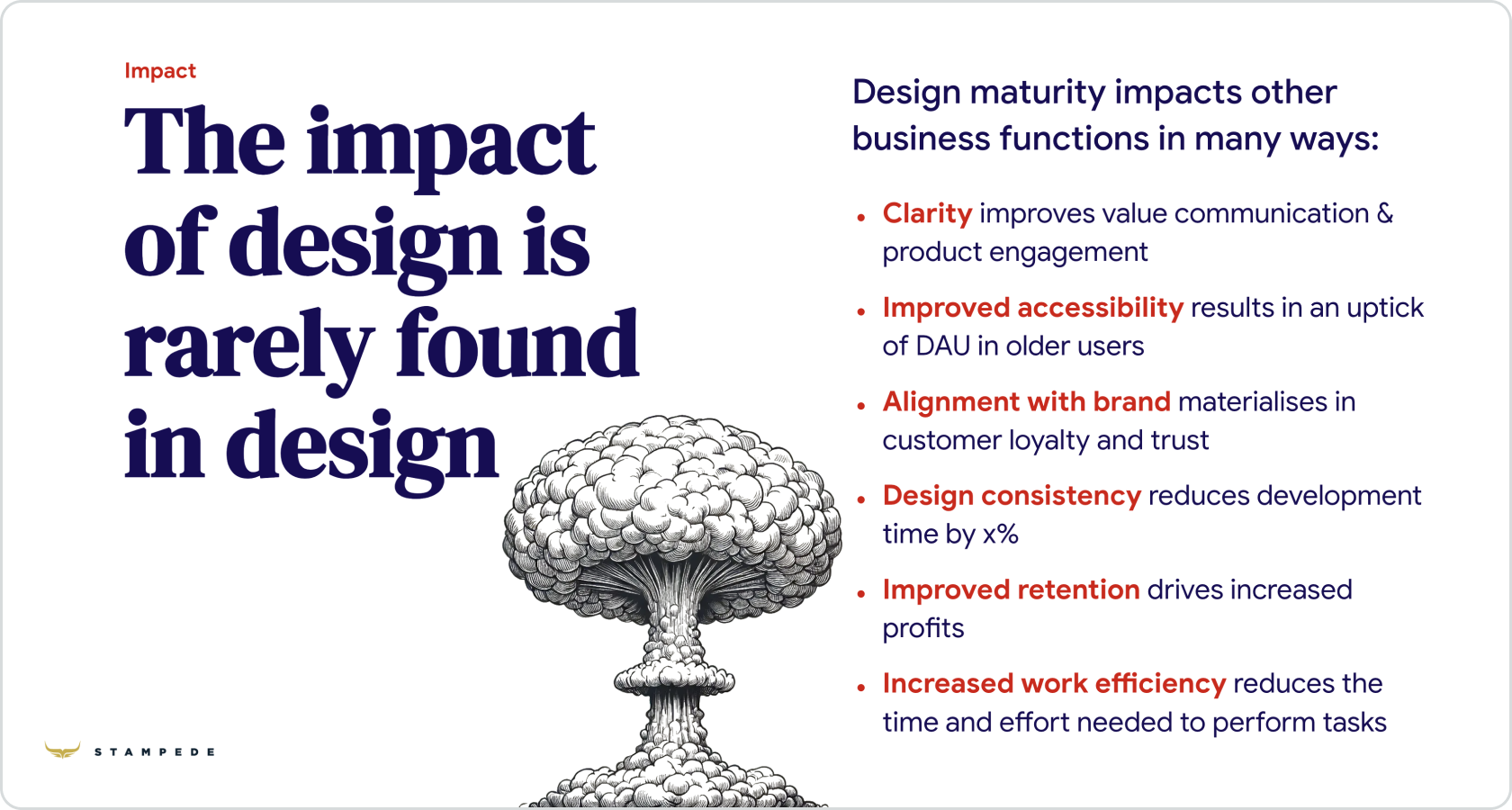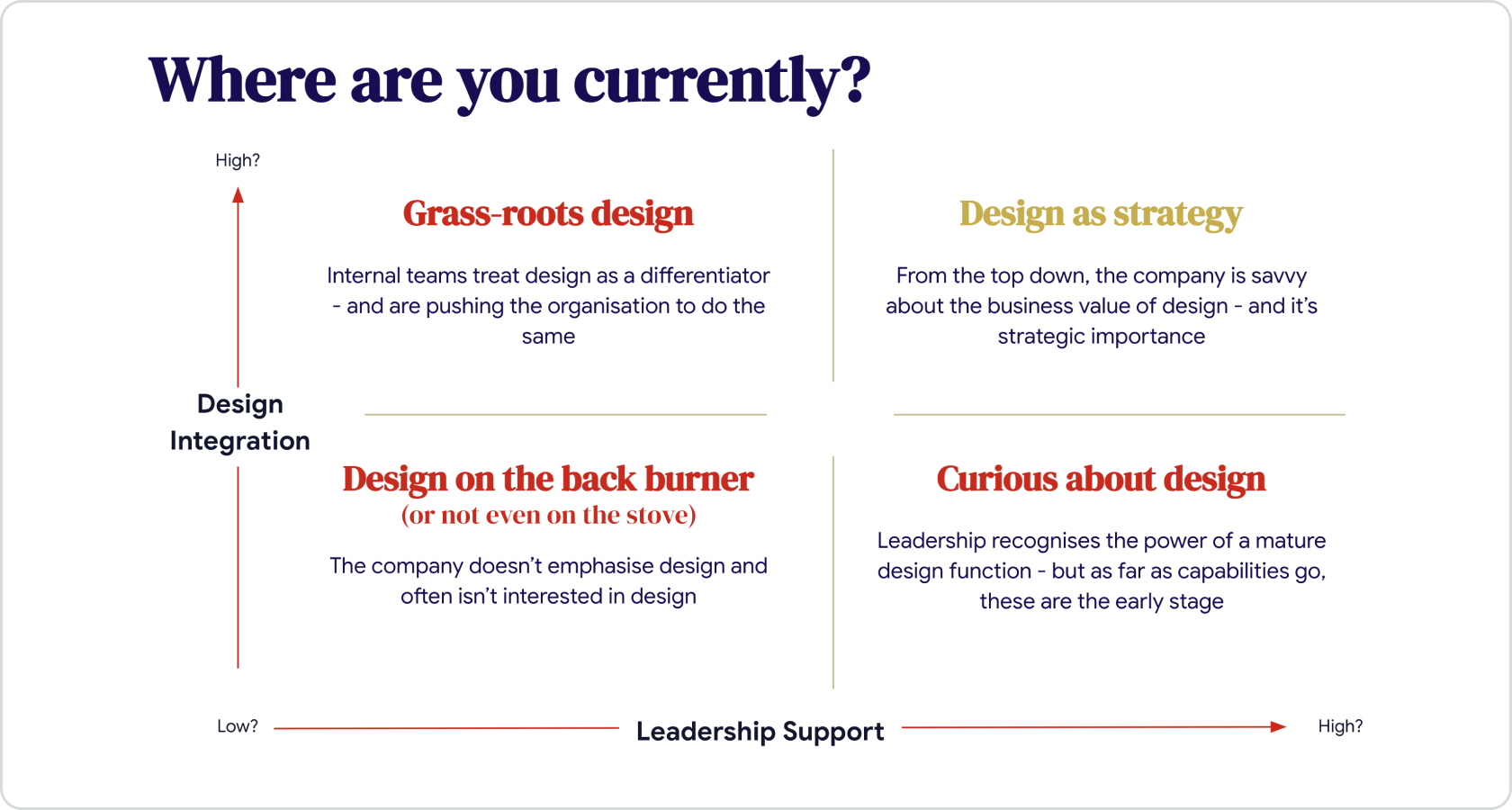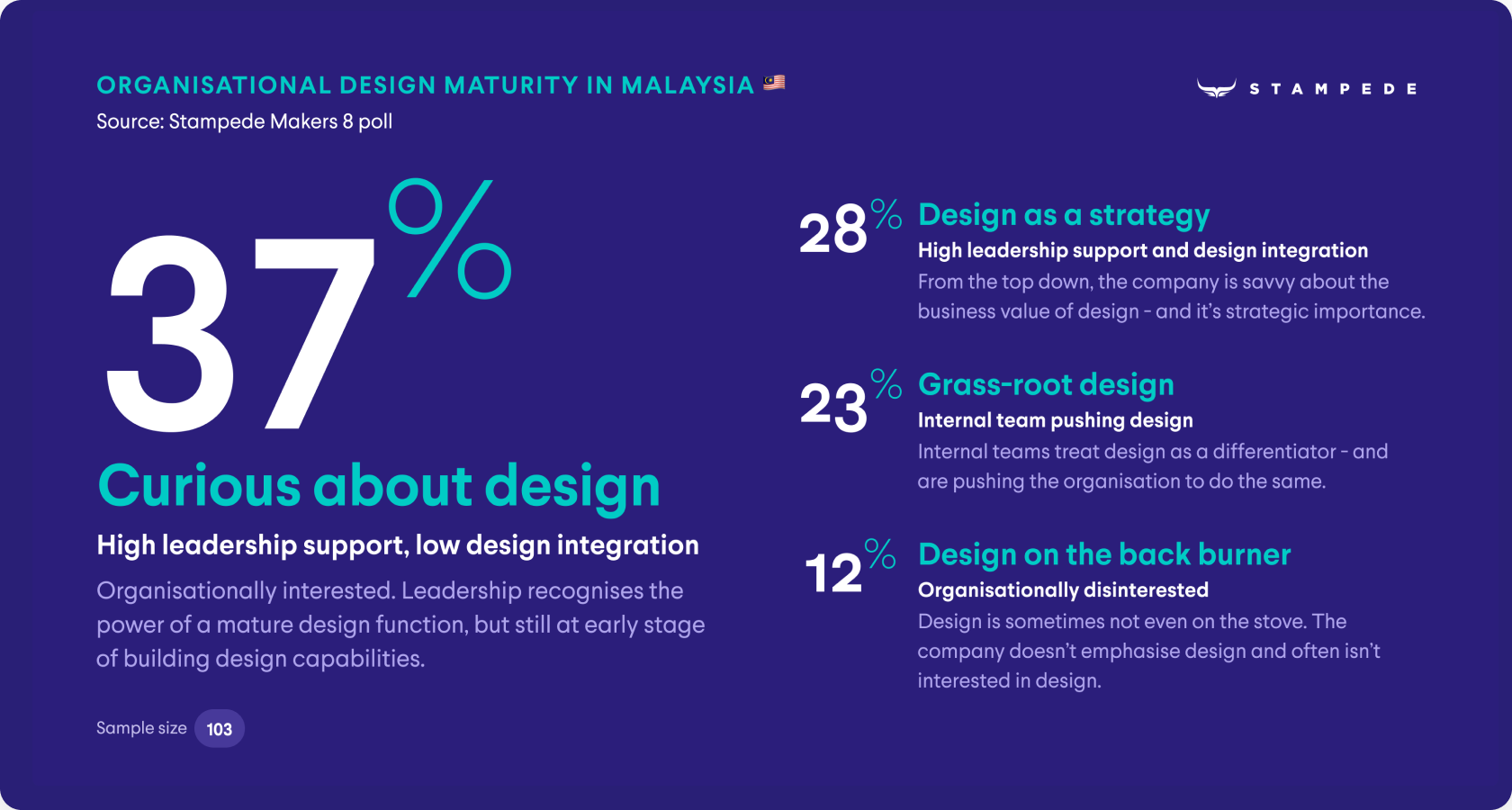What happens when you gather the brightest minds from design, business, and engineering and intersect them? You get magic. At Makers 8, the energy was electric, the talk and panel were lit, and the takeaways made you look forward to Monday.
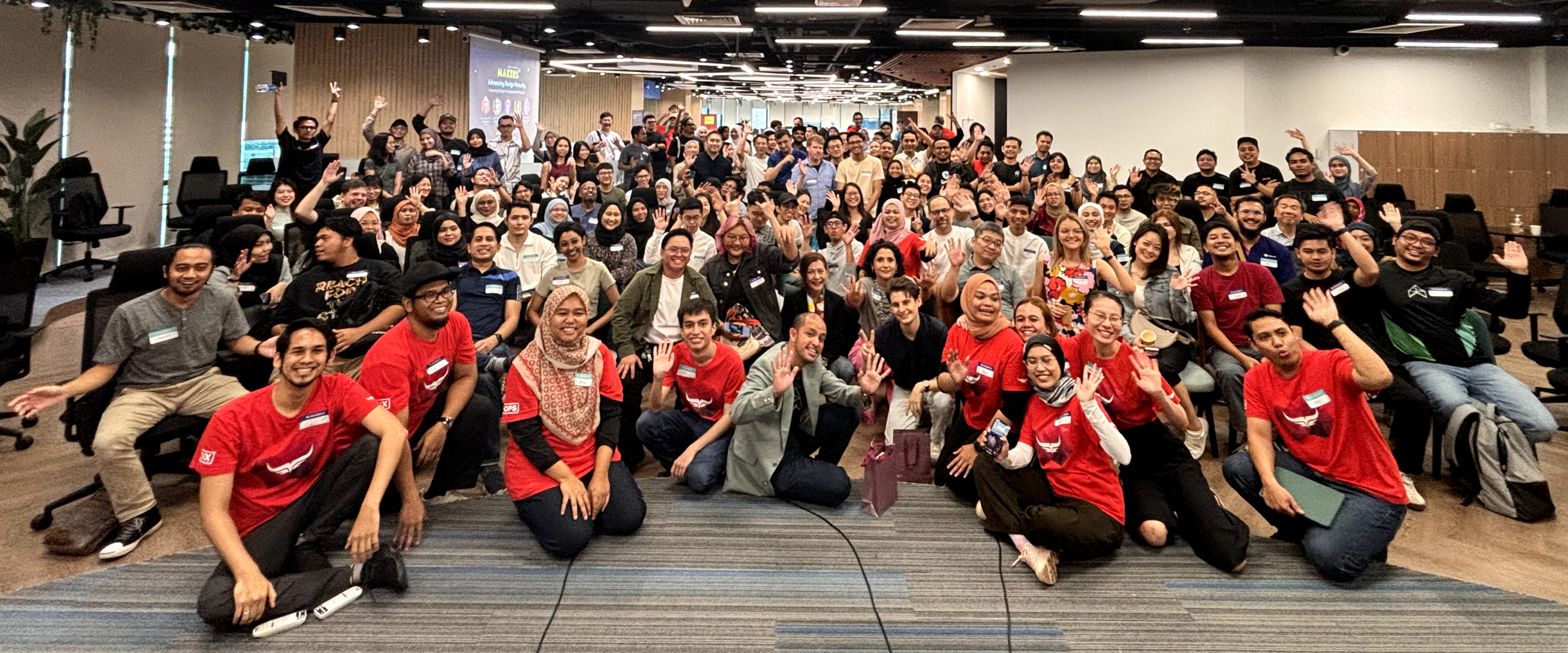
Stampede Makers is a quarterly event that celebrates the designers and builders in all of us. Run by the team at Stampede, it gathers those who are advancing their craft in design and technology to create better, more thoughtful worlds.
Makers 8 explores growing design maturity in organisations, or what we know as the big elephant in the room that rarely gets air time in Malaysia. Many thanks to our community partner, Setel, for opening their doors to over 170 people last Saturday. Everything from learning to ideas to coffee and seats was quite literally overflowing.
From the very first session, it was clear that this was not just another conference calling itself a meetup. Stampede Makers is a movement, a call to elevate design practices, and a celebration of the old-age wisdom of “if you must go far, go together.”
Stay here and join us as we recap the highlights and insights from Makers 8.
Keynote: Design maturity — investment or cost?
Hidayu Hakim, Stampede’s UX Lead, kicked off the session with a resoundingly relevant keynote about design maturity, how it manifests in organisations and the debate about whether it is an investment or cost.
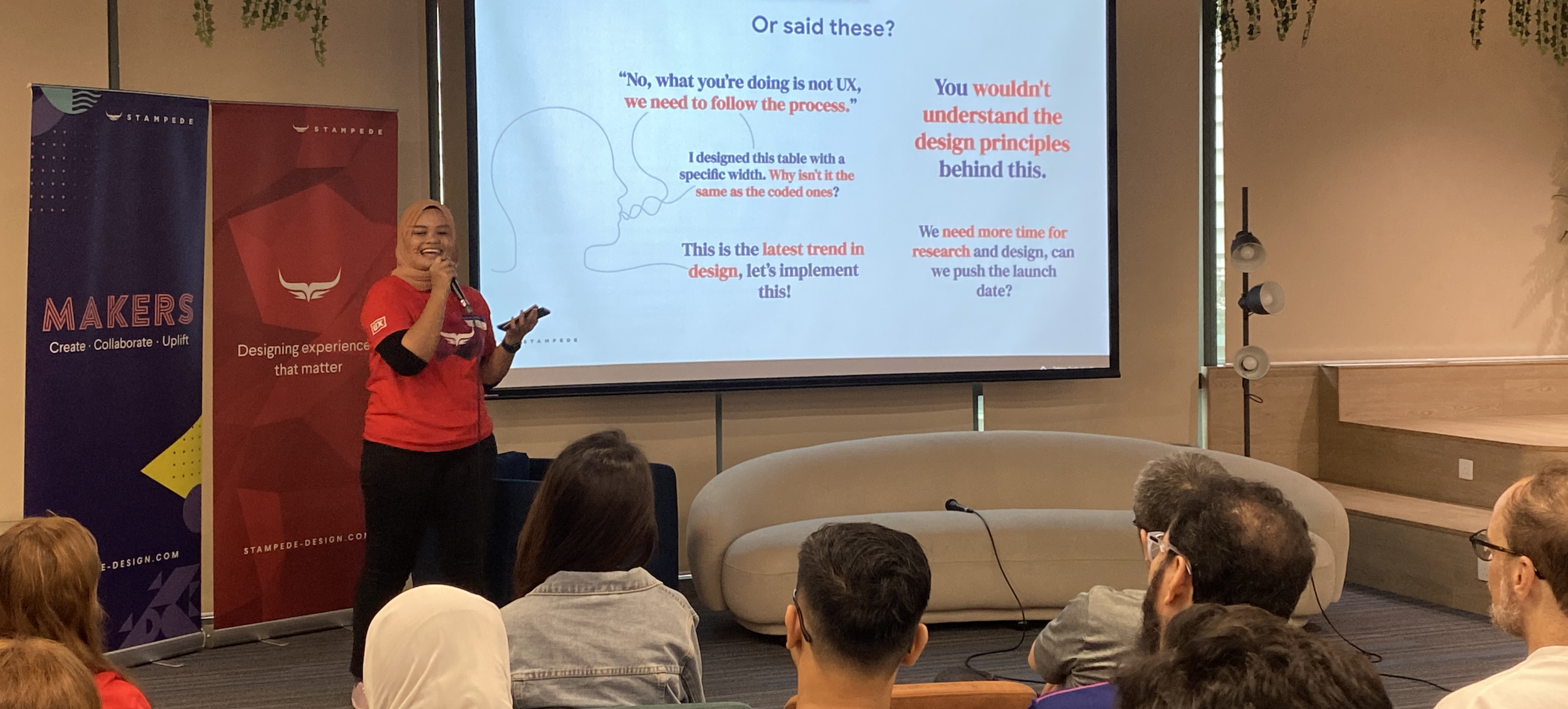
“The impact of design is not found in design.”
In her talk, Hidayu takes attention away from design for aesthetics value to driving business outcomes and enhancing user satisfaction. Integrating design into strategic decision-making enables businesses to boost engagement, increase retention, and foster customer loyalty. A customer-obsessed approach also leads to operational efficiencies and market differentiation, proving design is a smart investment.
She also highlighted that achieving design maturity is an ongoing journey requiring continuous effort and organisational support. Design must be advocated and embedded at every level, embracing cross-functional collaboration so it can be set as the base for human-centred innovation. This approach must also align with strategic goals for design to be a serious driver towards sustainable growth and long-term competitiveness.
As a researcher curious about Malaysia’s design maturity, Hidayu conducted a live poll during her talk. It revealed diverse maturity levels across organisations, contrary to her expectations of a predominantly nascent stage.
While 37% of participants were “Curious about design,” recognising its importance but still in the early stages of design integration, 28% already viewed design as a strategic element driven from the top down.
Organisations in Malaysia are increasingly recognising that design maturity is not just about design; it’s an investment in business performance and innovation. The leadership is ready to embrace design more deeply, putting the ball in the designers’ court to lead the charge.
Panel: Breaking barriers to growing design maturity
Hidayu’s talk set the stage for an in-depth panel discussion at Makers 8. The panel brought together voices from design, business, and engineering to explore the benefits, barriers, and breakthroughs in growing design maturity across organisations of all sizes. Moderating this discussion was a pleasure, given the diverse and unique perspectives each panellist brought to the table.
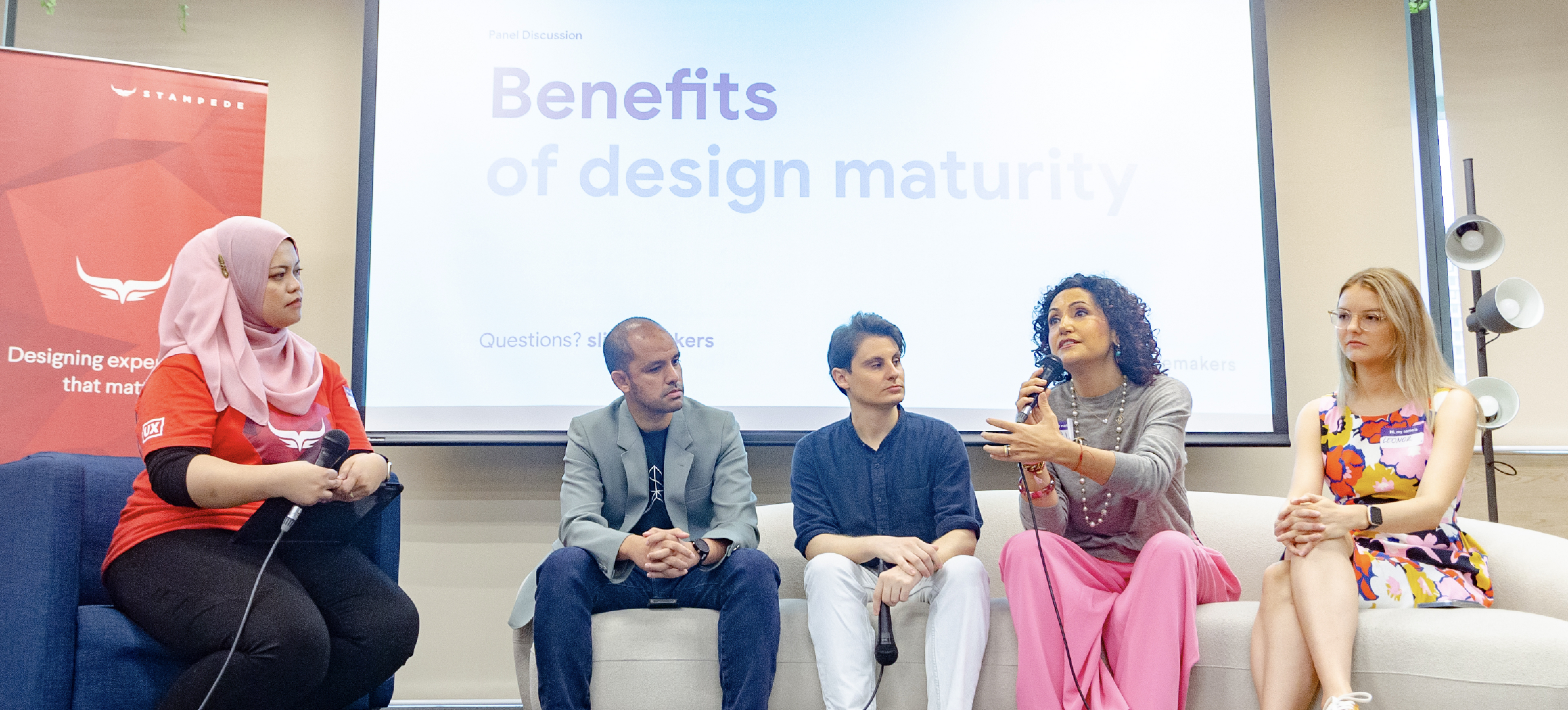
Joining us was Ikhwan Nazaruddin, Technical Director at Aerodyne Group, who champions the integration of design maturity within technological frameworks, highlighting its significant benefits for product development.
On the business side, Mariam Parineh, founder and strategist of VivaValet, readily incorporates user-centred design into her business strategies but discovers she needs to cascade down this understanding and inspire action to the ground level.
We also had Leonor Cogneau, a global UX strategist and design leader who has driven UX vision and strategy across diverse industries.
Completing the panel was Riccardo Lavezzari, Principal Product Designer at SEEK, who has 15 years of experience advancing design maturity in multinational organisations with a focus on outcomes and steady navigation.
Together, the panel explores the benefits, barriers and breakthroughs in growing design maturity.
“Benefits that create long-term competitive advantage.”
At Makers 8, our panel illuminated the substantial benefits of growing design maturity within organisations. Ikhwan highlighted the importance of design artefacts like visualisations and user journeys in improving product stickiness, echoing Mariam’s point that UX research and usability tests help businesses avoid early mistakes and enable strategic pivots based on evidence.
To Mariam, usability consistently trumps trends. Understanding the customer—including their psychographic, environmental, and physical challenges—yields better results than following trends. For VivaValet, bringing insights from the research and exposing their product and development team to how older users interact with technology was a game changer for both the business and the product.
Leo observed that growing design maturity boosts team morale, with teams feeling more valued, confident and innovative with every product release. This aligns with Riccardo’s insight that design maturity enhances business growth, engineering efficiency, and time-to-market. Designing with customers provides a defensible long-term competitive advantage, reinforcing the company’s innovation stack and making it difficult for others to replicate.
“It’s a persistent, continuous journey.”
Despite the clear benefits, several barriers can impede the growth of design maturity. Ikhwan pointed out that in the frenzy of achieving targets, businesses could prioritise short-term deliverables over strategic improvements, leading to quick solutions like copying competitors or making shortcuts that become UX debt that increases the cost of service this debt over time.
This issue is compounded when designers themselves shy away from business conversations, as Ikhwan observed, and thus miss the opportunity to align their work with organisational goals. On the business side, Mariam added that when the business is ready to engage and experiment, designers often play it safe and seek permission before innovating, as they are trained to establish constraints before exploring possibilities.
On the ground, achieving design maturity is a continuous journey requiring persistent effort and strategic alignment, says Riccardo. His insight highlights the need for dedication and a long-term vision, as design maturity does not happen overnight but through sustained effort and collaboration across departments.

“Be brave and be bold.”
One thing we always do at Makers is scale the strategic heights but also wrap each session with actionable tips or experiments you could immediately try on Monday. The panelists were truly generous with their tips for achieving breakthroughs in design maturity. Here’s what they said.
No design culture? Build one!
If your organisation is exhibiting signs of low design maturity, Riccardo suggests flipping the situation into a chance to create a design culture from scratch. Making the design process visible and inclusive by involving cross-functional colleagues has successfully turned these peers into staunch allies.
Speak your stakeholders’ language
Ikhwan emphasises the importance of speaking the language of stakeholders. Data is the common ground for design, product, engineering, and business, and designers could use data, especially if gathered from mixed-method research, to bring clarity and confidence to the product development process.
Initiate without permission
Mariam and Leo urge designers to take the initiative without waiting for permission. So used to designing with constraints, the freedom to explore other possibilities and really stretch design capability may be debilitating to risk-averse designers who like to play it safe. Innovation lies outside the comfort zone, so go on-site, shadow people, conduct interviews, and even start a secret design system if needed, says Leo.
Ask for opportunities
Malaysians could be shy folks. If we’re not invited, we often assume it was by design. This is certainly not the case, says Ikhwan and Mariam. Managers and business stakeholders may not know that you want to contribute, so be bold and ask for opportunities. State your intent to create value and ask for the invitation. As Mariam quipped, “No business stakeholders in their right mind will not want their people to contribute in a big way to meet organisation goals”
Create lift for others
Leo also suggests finding design allies across the organisation. We could collaborate with engineers, operations staff, or PMs eager to build meaningful products. The success achieved together can inspire others to join the effort. One way to do this is by identifying your collaborator’s KPIs and finding ways you could help them move the needed through design.
Our massive thanks to Ikhwan, Mariam, Riccardo and Leo for lending their diverse voices to Makers 8. This cross-disciplinary discourse makes for real and candid conversations that set the right foundation for how we could all join hands and work together to grow design maturity.
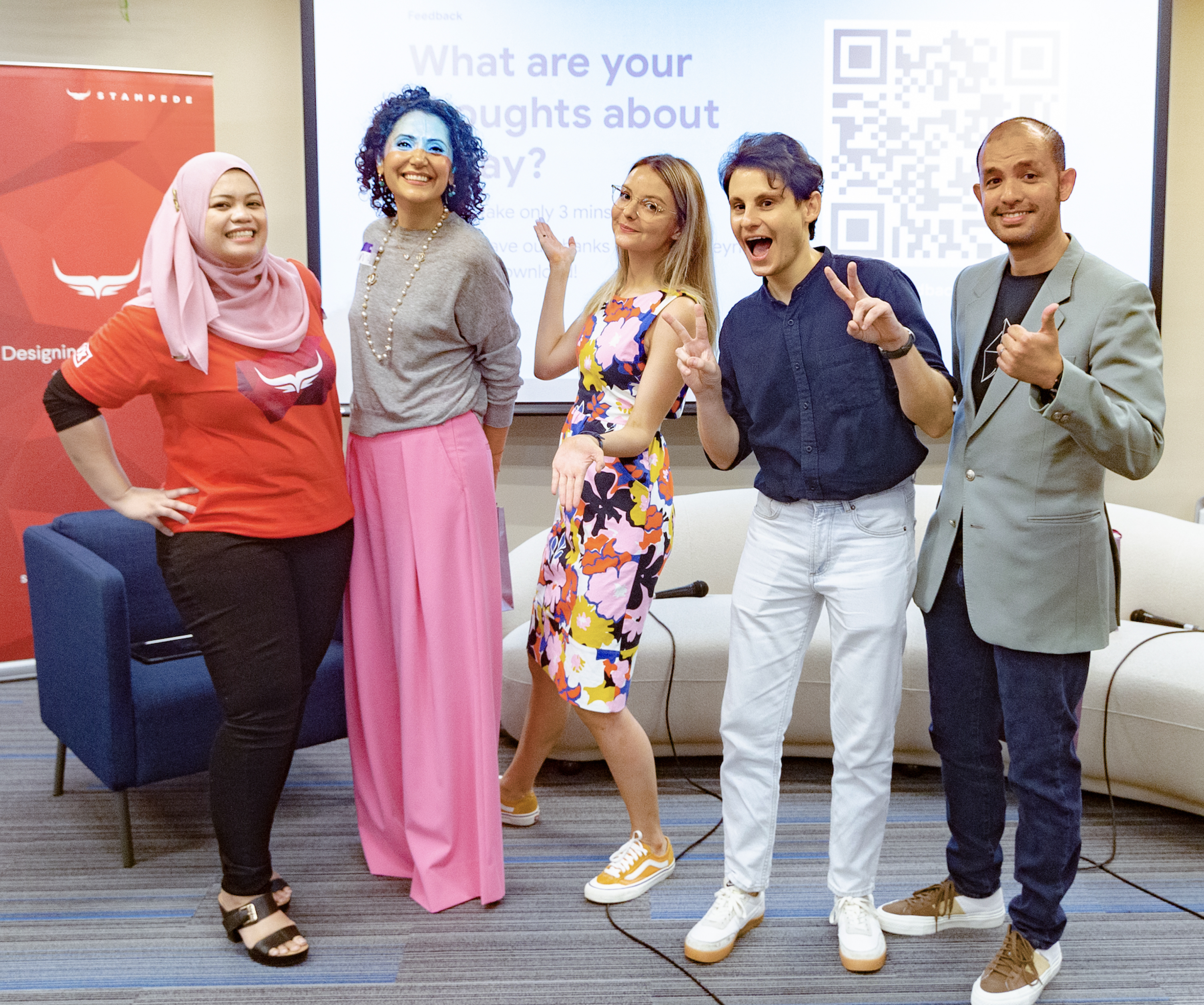
Amplifying voices of Makers 8
Just like the panel, Makers’ audience is diverse in background, training, and expertise. Some travel from other states, and a few are Malaysian diaspora who visit home (and stay longer) to join us.
That creates an interesting congregation that never failed to surprise with their candid and forward-thinking responses. Designers, engineers, product managers, entrepreneurs, doctors, lawyers and architects sit side by side, engaging, sharing thoughts and building connections that last beyond the event. We’re fortunate to have captured that spirit of Makers magic at Makers 8.
The start of a meaningful career
In every physical Makers, we help connect design talents with workplaces where they can thrive. Our Makers Job Board saw opportunities from Ernst & Young, SEEK, Maybank, Touch ‘n Go Digital, and many more companies.
Stampede is growing our team too so if you’re looking to join a team that designs and builds thoughtful future experiences, visit our Career page for job openings.
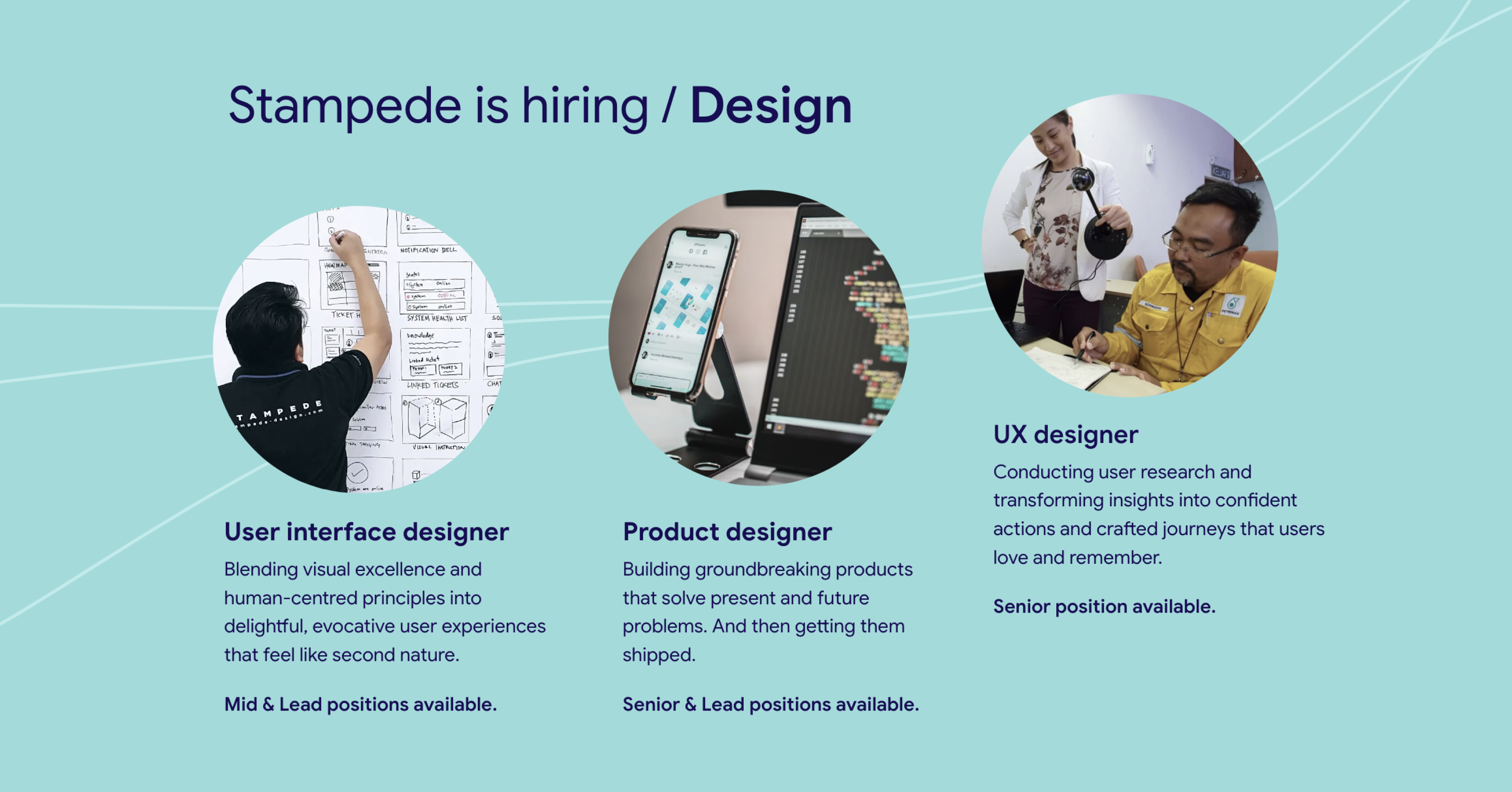
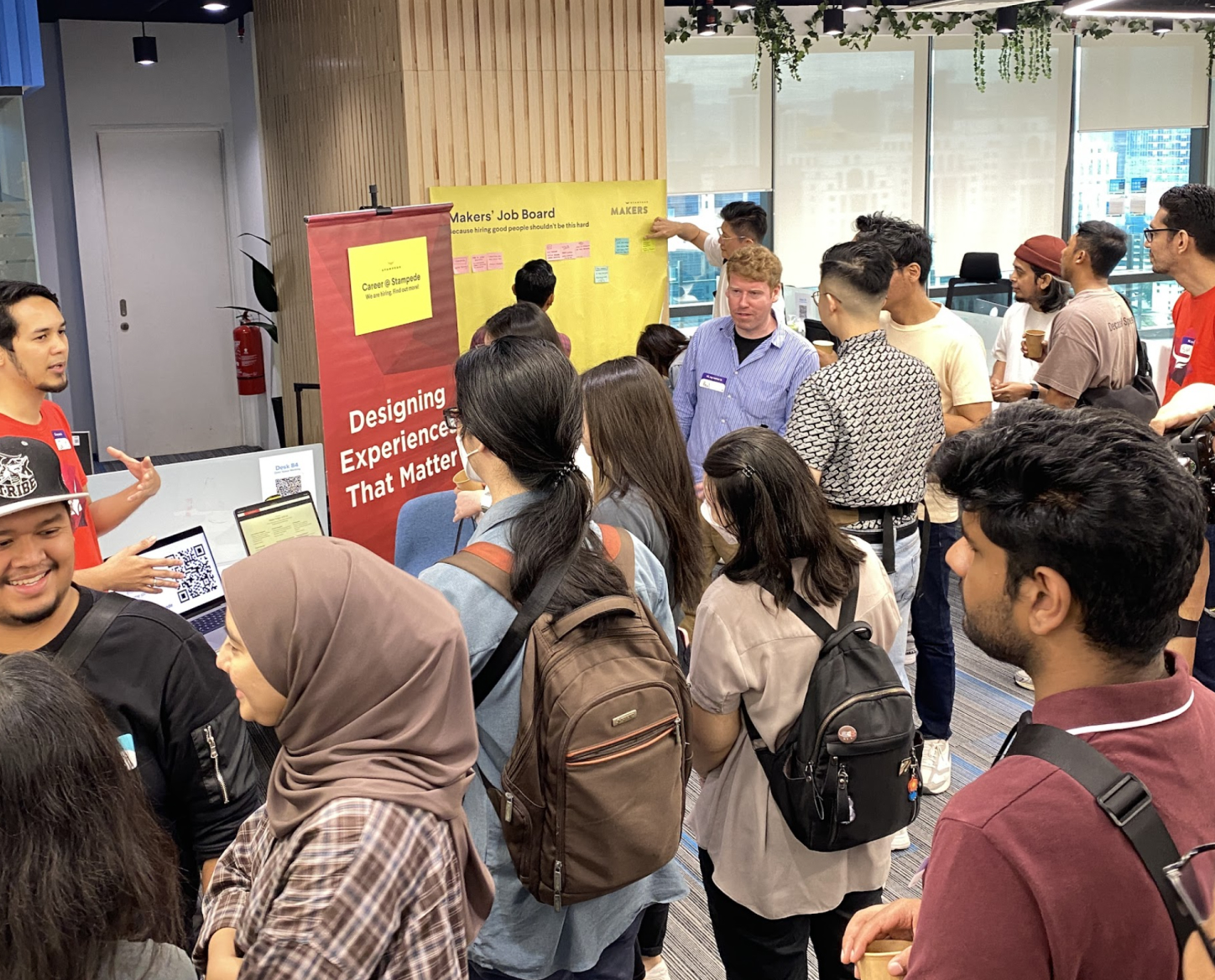
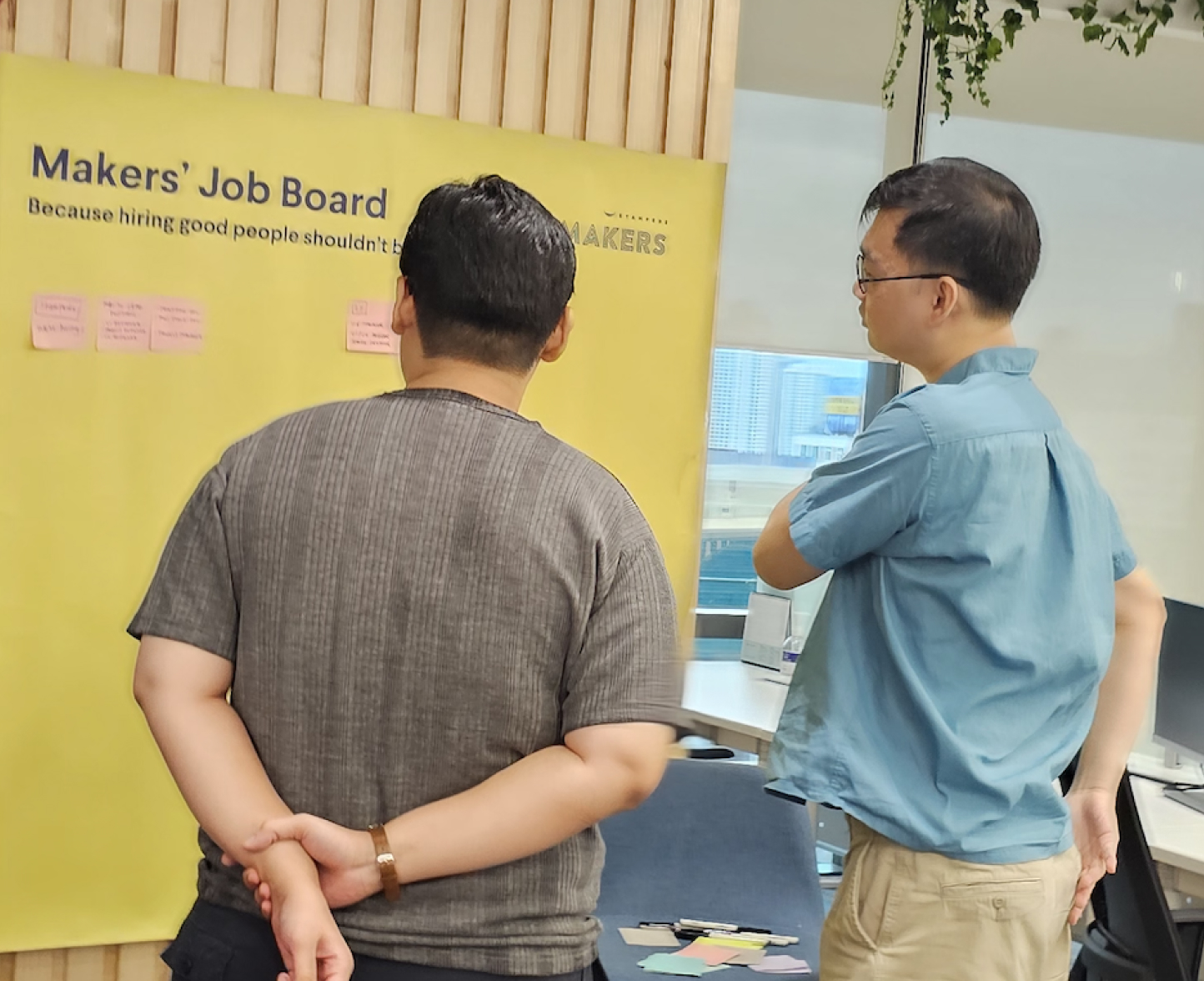
Love, thanks and see you at Makers 9!
Makers 8 wouldn’t have been possible without our incredible team’s hard work and dedication. From coordinating logistics to managing social media to planning the attendee experience, this has labour of love written all over it.
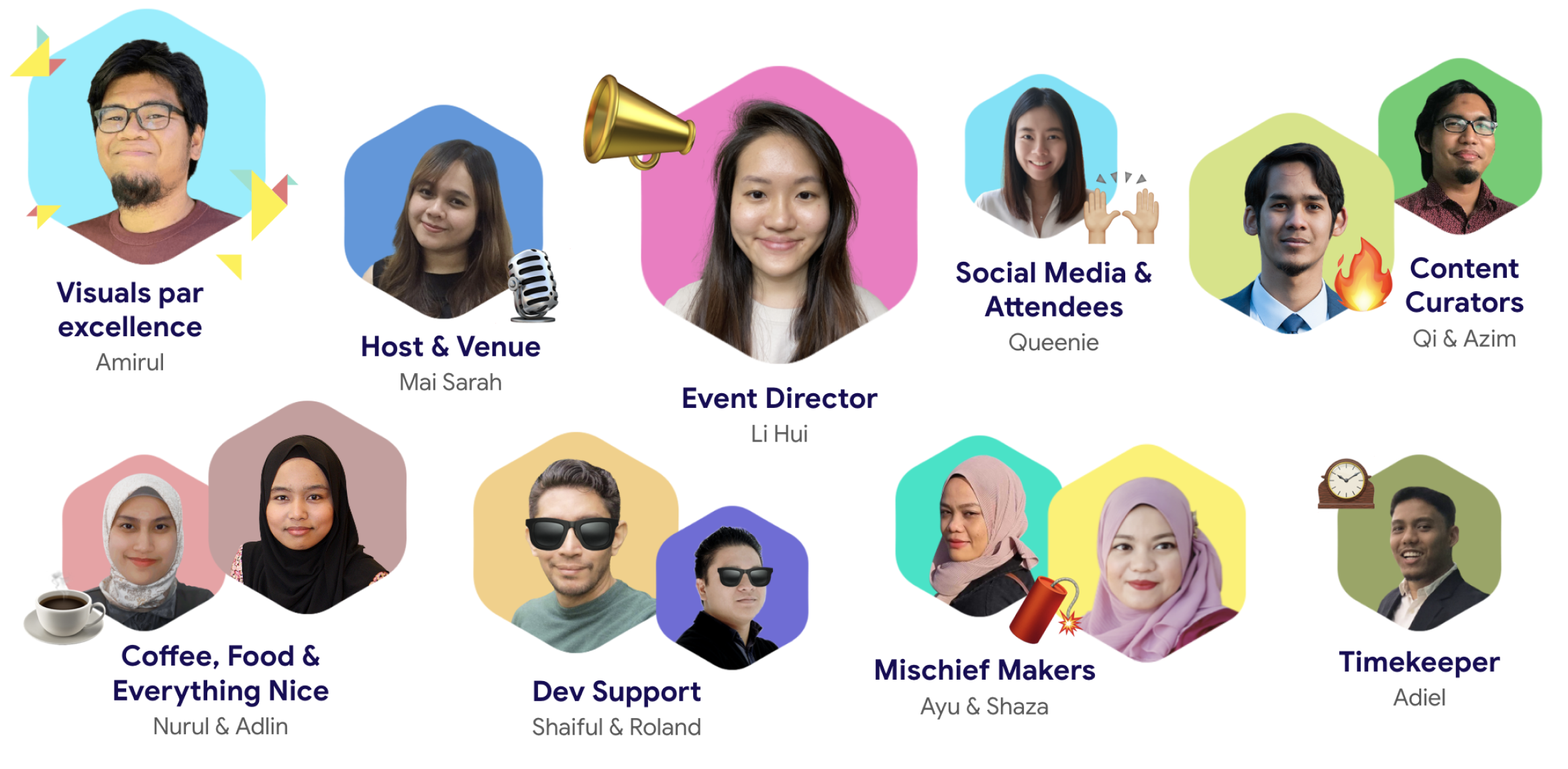
Thank you for being part of our community of designers and builders of the future! To creating better worlds together, and see you at Makers 9 in September!
